Chapter: 9th Maths : UNIT 6 : Trigonometry
Trigonometric Ratios of Some Special Angles
Trigonometric Ratios of Some Special Angles
The values
of trigonometric ratios of certain angles can be obtained geometrically.
Two special
triangles come to help here.
1. Trigonometric ratios of 45°
Consider
a triangle ABC with angles 45° , 45° and 90°
as shown in the figure 6.9.
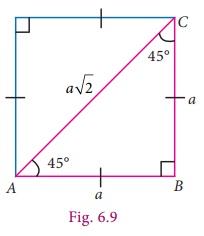
It is the
shape of half a square, cut along the square’s diagonal. Note that it is also an
isosceles triangle (both legs have the same length, a units).
Use Pythagoras
theorem to check if the diagonal is of length a√2 .
Now, from
the right-angled triangle ABC,
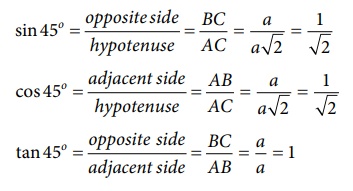
The reciprocals of these ratio can be easily foundout to be
cosec 45º = √2 ;
sec 45 º = √2 and
cot 45º = √1
2. Trigonometric Ratios of 30° and 60°
Consider
an equilateral triangle PQR of side length 2 units.
Draw a bisector
of ∠P. Let it meet QR at M.
PQ = QR =
RP = 2 units.
QM = MR = 1 unit (Why?)
Knowing PQ
and QM, we can find PM, using Pythagoras
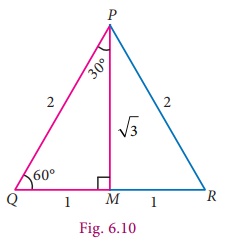
we find that
PM = √3 units.
Now, from
the right-angled triangle PQM,
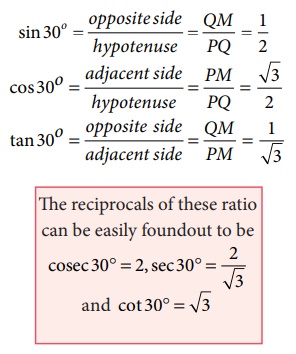
We will use
the same triangle but the other angle of measure 60° now.
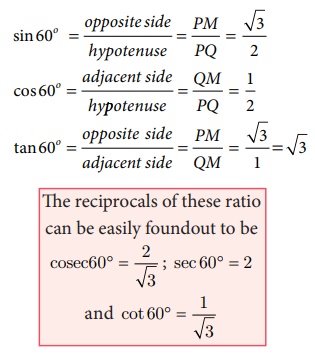
3. Trigonometric ratios of 0° and 90°
To find the
trigonometric ratios of 0° and 90°
, we take the help of what is known as a unit circle.
A unit circle
is a circle of unit radius (that is of radius 1 unit), centred at the origin.
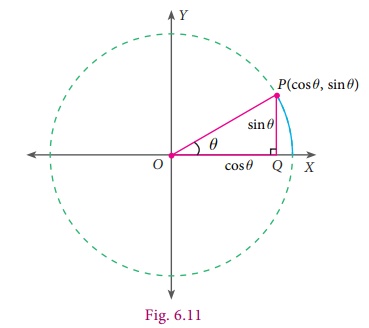
Why make
a circle where the radius is 1unit?
This means
that every reference triangle that we create here has a hypotenuse of 1unit, which
makes it so much easier to compare angles and ratios.
We will be
interested only in the positive values since we consider ‘lengths’ and it is hence
enough to concentrate on the first quadrant.
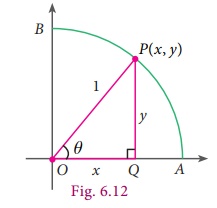
We can see
that if P(x,y) be any point on the unit circle in the first
quadrant and ∠POQ=θ.
sin θ = PQ/OP = y/1 = y ; cos θ = OQ/OP = x/1 = x ; tan θ = PQ/OQ = y/x
When θ =
0º, OP coincides with OA, where A is (1,0) giving x = 1, y = 0 .
We get thereby,
sin 0º = 0 ; cosec 0º = not defined (why?)
cos 0º = 1 ; sec 0º = 1
tan 0º = 0/1 = 0 ; cot 0º = not defined (why?)
When θ =
90º, OP coincides with OB, where B is (0,1) giving x = 0, y = 1 .
Hence,
sin 90º = 1 ; cosec90º = 1
cos 90º = 0 ; sec90º = not defined
tan90º = 1/0 = not defined ; cot 90º = 0
Let us summarise
all the results in the table given below:
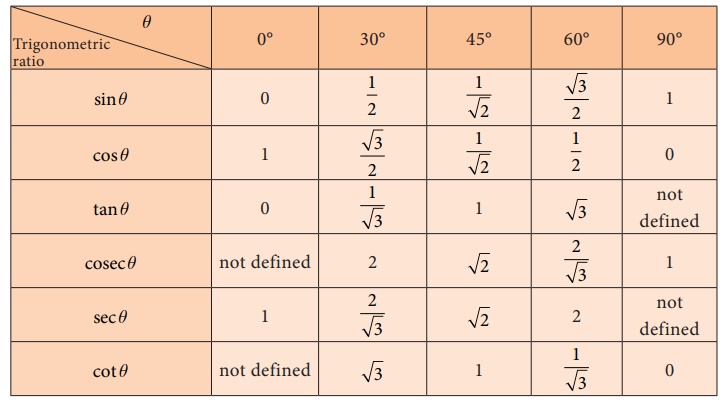
Example 6.5
Evaluate:
(i) sin
30º + cos 30º
(ii) tan
60˚ cot 60˚
(iii) [tan
45º] / [ tan 30º + tan 60º ]
(iv) sin245º + cos245º
Solution
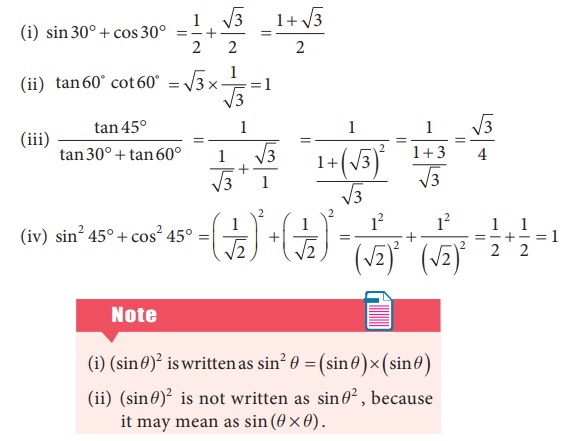
Thinking Corner
The set of three numbers are called as Pythagorean triplets as they
form the sides of a right angled triangle. For example,
(i) 3, 4, 5 (ii) 5, 12, 13 (iii) 7, 24, 25
Multiply each number in any of the above Pythagorean triplet by a
non-zero constant. Verify whether each of the resultant set so obtained is also
a Pythagorean triplet or not.
Example 6.6
Find the
values of the following:
(i) (cos
0º + sin 45º + sin 30º)(sin 90º − cos 45º + cos 60º)
(ii) tan2
60º − 2 tan2 45º − cot2 30º + 2sin2 30º + 3/4 cosec2 45º
Solution
(i) (cos
0º + sin 45º + sin 30º)(sin 90º − cos 45º + cos 60º)
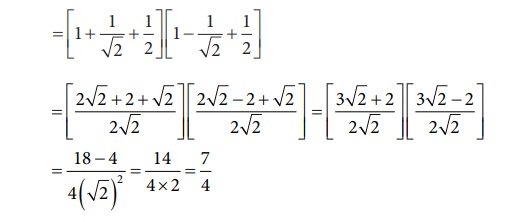
(ii) tan2
60º − 2 tan2 45º − cot2 30º + 2sin2 30º + 3/4 cosec2 45º
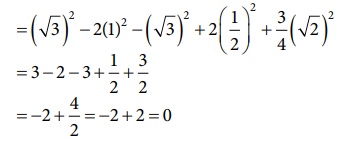
Note
(i)
In a right angled triangle, if the angles are in the ratio 45°
: 45°
: 90°
, then the sides are in the ratio 1 : 1 : √2.
(ii)
Similarly, if the angles are in the ratio 30° : 60° : 90° , then the sides are in the ratio 1
:
√3 : 2 .
(The two
set squares in your geometry box is one of the best example for the above two types
of triangles).
Related Topics